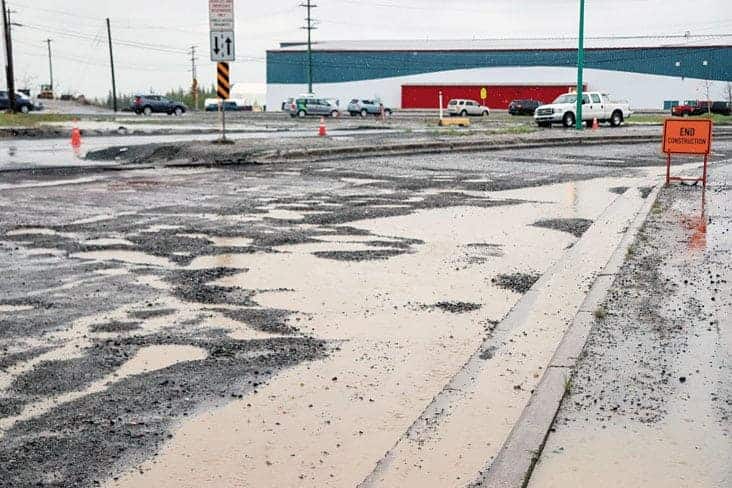As the dog days of summer come to an end, another season has passed without the serious threat of a forest fire.

Dylan Short/NNSL photo
The city had record rainfall levels between May and August, particularly in June, which was the wettest on record in 76 years. July followed with the third most amount of rainfall ever.
In short, it was a very wet summer.
“I think the key story for Yellowknife is the amount of precipitation in June and July and what you saw over those two months was over 200 mm of rain,” said Brian Proctor, meteorologist with Environment Canada. “This represents about two-thirds of the amount of rainfall you would see in a normal calendar year.”
Typically Yellowknife gets on average 288.6 mm of precipitation on an annual basis.
In a typical year, almost 40 per cent of annual precipitation takes place from June to August when thunderstorms are frequent. The rest is accounted for by snowfall during the year.
Temperatures in the city were close to average throughout the summer, which also shaped conditions, Proctor said.
In May, the average temperature was 6.1 C, higher than the average of about 4.9 C. In June the temperature was again slightly above the 13.1 C average with 14 C before the number dropped below the 16.6 average to 16.2 C. The temperature in August to date has been exactly on the average temperature at 14.3 C.
“We see the number up slightly in May about a degree and a half (from) what you would normally see, and in June it was also a bit warmer,” Proctor said. “But in July it was a half-degree colder, so it has not been remarkable for temperature and, on average, what you would normally expect.
“The mean temperature hasn't been significantly different and it has been cooler and not a real warm summer,” Proctor said. “That is why you guys haven't seen much of a fire season.”
In areas in British Columbia and along parts of the West Coast where forest fires are raging, conditions were almost directly opposite of what Yellowknife saw, including low precipitation and high temperatures.
Proctor said another factor that lessens the risk of forest fires is late winter snowfalls that are high in moisture content as these conditions dampen the underbrush that fuels fires. Even this may not be enough in some cases, however, said Proctor as things “conspired for the worst in B.C.”
“What they were experiencing in areas of British Columbia this year were very warm and dry conditions,” he said. “But even though there was a good snow pack in B.C. this year, it melted very rapidly and the underbrush growth in the early season dried out almost immediately.”
Amber Simpson, wildfire information officer for ENR, said going into the summer, it was expected that there would be numerous forest fires to combat.
“Back in May it was pretty dry and we thought we would have a an active fire season, NWT-wide,” she said. “We also had record heat back in May and two weeks of lightning and we were lucky that didn't start fires.”
She added that while there were days in June with lightning, there were cold lows in temperature with a lot of rain. It only became hot and dry in late July, which was the most active period for fires this summer. This summer there have been 54 fires NWT-wide, the second least active fire season on record, she said. This led to 11,271 hectares affected by fire.
By contrast, during the 2014 summer fire season, there were 385 fires, with 3.4 million hectares burned.
Yellowknifers were not necessarily happy about the summer season.
Matthew Gray, general manager of the Yellowknife Golf Course, said it was easily the worst year for his business.
“It has been the worst weather that I have ever seen and I have been here for nine years,” Gray said. It was cloudy, windy and rainy and I definitely noticed had some heavy downfalls on some important days.”
Gray said the weather this year led to the cancellation or delay of corporate tournaments and club tournaments, which either raise money or offer local players fun summer recreation, he said.
“With the Midnight Sun Tournament (in June), for example, (it) was probably the worst we have had,” he said. “We did have 290 participants every year but I had to pull them off at 1:30 a.m. because of torrential rain and it was pitch black.”